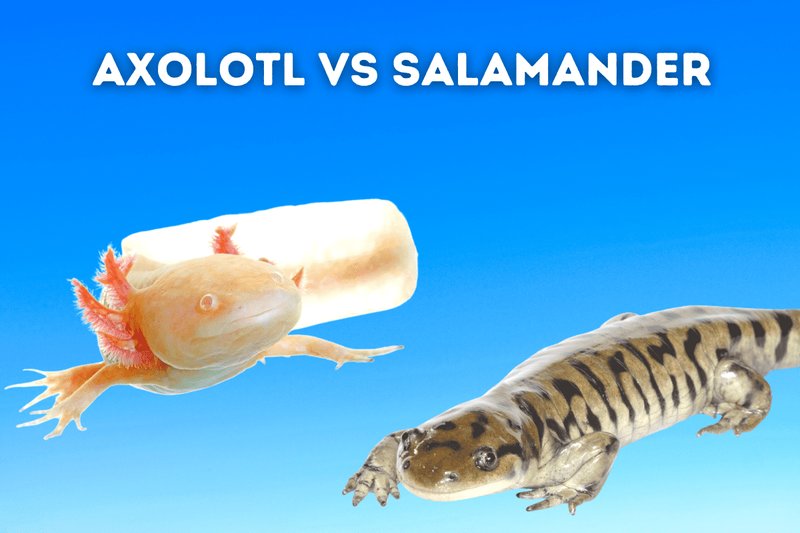
Let’s dive into the world of these two remarkable creatures. Think of axolotls as the quirky cousins of salamanders, living out their lives in the water while salamanders enjoy a more traditional amphibian lifestyle. So, if you’ve ever been curious about what makes them unique, you’re in the right place.
What Are Axolotls?
Axolotls, often referred to as “Mexican walking fish” (though they’re not fish at all), are a type of salamander. They’re known for their ability to regenerate limbs and even parts of their heart and brain! Isn’t that wild? Native to the lakes of Xochimilco in Mexico, these fascinating creatures spend their entire lives in water, never fully transitioning to a terrestrial life.
What really catches your eye are their feathery gills, which wave like little pink plumes on either side of their heads. They come in various colors, from dark brown to a striking pink. You might think they look like something out of a fantasy movie, and you wouldn’t be wrong! Their cute, almost cartoonish appearance has made them popular pets, not just in their native waters but all over the world.
But, here’s the thing: axolotls are critically endangered in the wild due to habitat loss and pollution. It’s a reminder that while these creatures are trendy in the pet trade, we need to care for their natural habitats too.
What Are Salamanders?
Now, let’s talk about salamanders. These amphibians are part of a larger family that includes a variety of species, each with its own unique traits. Unlike axolotls, many salamanders live part of their lives on land after they undergo metamorphosis from tadpole-like larvae into adult forms.
Salamanders can be found all over the world, in both wet and dry environments. You might spot them hiding under rocks or logs in a forest, or perhaps you’ve seen them after a rainstorm when they venture out. They can vary greatly in color and size, from the tiny, bright-colored Eastern Red-backed Salamander to the large and striking Eastern Hellbender, which can grow up to two feet long!
These creatures have smooth, moist skin that helps them breathe through their skin. They still need to stay damp, so it’s not uncommon to find them near water sources. Salamanders also have a fascinating defense mechanism: when threatened, some species can secrete toxins from their skin to deter predators. Talk about an effective survival strategy!
Physical Differences Between Axolotls and Salamanders
Now that we’ve met both axolotls and salamanders, let’s talk about what really sets them apart physically. To start, axolotls are unique because they retain their larval features throughout their lives; this is a phenomenon known as neoteny. They keep their gills and don’t develop lungs like most salamanders do.
On the other hand, salamanders typically undergo complete metamorphosis. They start as eggs, hatch into aquatic larvae, and then transform into adults that live on land. So, if you were to look at a salamander, you’d notice a drastic change in form throughout its life stages. This difference in development leads to variations in their habitats and lifestyles.
In terms of color, axolotls are often pink or white but can also be black or grey. Salamanders, however, sport a broader range of colors and patterns. Some even have bright warnings to predators about their toxicity! So, if you see a bright yellow salamander with black spots, chances are it’s trying to say, “Stay away!”
Habitat and Range
When we think about where axolotls and salamanders live, it becomes clear that their environments play a big role in their lives. Axolotls are primarily found in freshwater lakes and canals of Xochimilco, near Mexico City. Sadly, their natural habitat has shrunk dramatically due to urbanization and pollution. This makes their survival increasingly precarious.
Salamanders, in contrast, can be found in various habitats worldwide, from tropical rainforests to temperate woods and grasslands. They thrive in moist environments, as their skin must remain damp to absorb oxygen. Their adaptability to different climate zones is one of the reasons why you’ll find salamanders on almost every continent except Antarctica.
So, whether it’s a peaceful lake in Mexico or a damp forest floor, both axolotls and salamanders have their preferred habitats. But the key takeaway is that while axolotls are confined to a small area, salamanders have a much wider range.
Diet and Feeding Habits
When it comes to their diets, axolotls and salamanders are both carnivorous but have some differences in feeding habits. Axolotls feast on a diet mainly consisting of small fish, worms, and insects. They have a fascinating way of eating: they actually gulp their food down whole!
In contrast, salamanders can also eat insects and worms, but their diet is often more varied. Depending on their size and species, they can even eat small mammals or other amphibians. Some salamanders actively hunt their prey, using their quick reflexes to catch insects on the go, while others may scavenge for food.
It’s quite interesting to observe their differing approaches. If you’ve ever fed an axolotl, you might notice how they seem to savor every bite with their tiny mouths. Salamanders, on the other hand, are a bit more dynamic in their pursuit of dinner.
Behavior and Temperament
For many people, the personality of a pet is just as important as its looks. Axolotls are often described as gentle and curious. They don’t have aggressive tendencies, which makes them suitable for aquarium life. You might find your axolotl watching you with its big eyes, almost like it’s trying to figure you out!
Salamanders can be a bit more varied in temperament. Some species are quite social, especially when living in groups, while others prefer solitude. They can be a bit more skittish too, often hiding when they sense danger. If you’ve ever spotted a salamander in the wild, it likely darted away quickly!
So, if you’re choosing between these two, keep in mind that axolotls offer a calmer pet experience, while salamanders can provide a more diverse range of interactions.
Conservation Status
Let’s be real: conservation is a pressing topic when discussing axolotls and salamanders. Axolotls are currently listed as critically endangered due to their dwindling populations in the wild. The main factors threatening their survival include pollution, habitat destruction, and the introduction of invasive species that prey on them.
On the flip side, many salamander species are not under immediate threat, but some are facing challenges as well. Climate change, habitat loss, and disease outbreaks (like the chytrid fungus) are affecting populations in various regions. Some species are thriving, while others are struggling to survive.
Whether you’re captivated by axolotls’ charm or fascinated by salamanders’ variety, it’s essential to consider their conservation. Supporting efforts to protect their habitats and advocating for pollution control are good steps toward ensuring these remarkable creatures continue to thrive.
In conclusion, while axolotls and salamanders may share some similarities as amphibians, their differences in lifestyle, appearance, and conservation status are significant. Understanding these key aspects not only enhances our appreciation of these animals but also highlights the importance of their survival in the wild. So, whether you’re thinking about adopting an axolotl or observing a salamander during a hike, you now have a richer perspective on these unique creatures.

